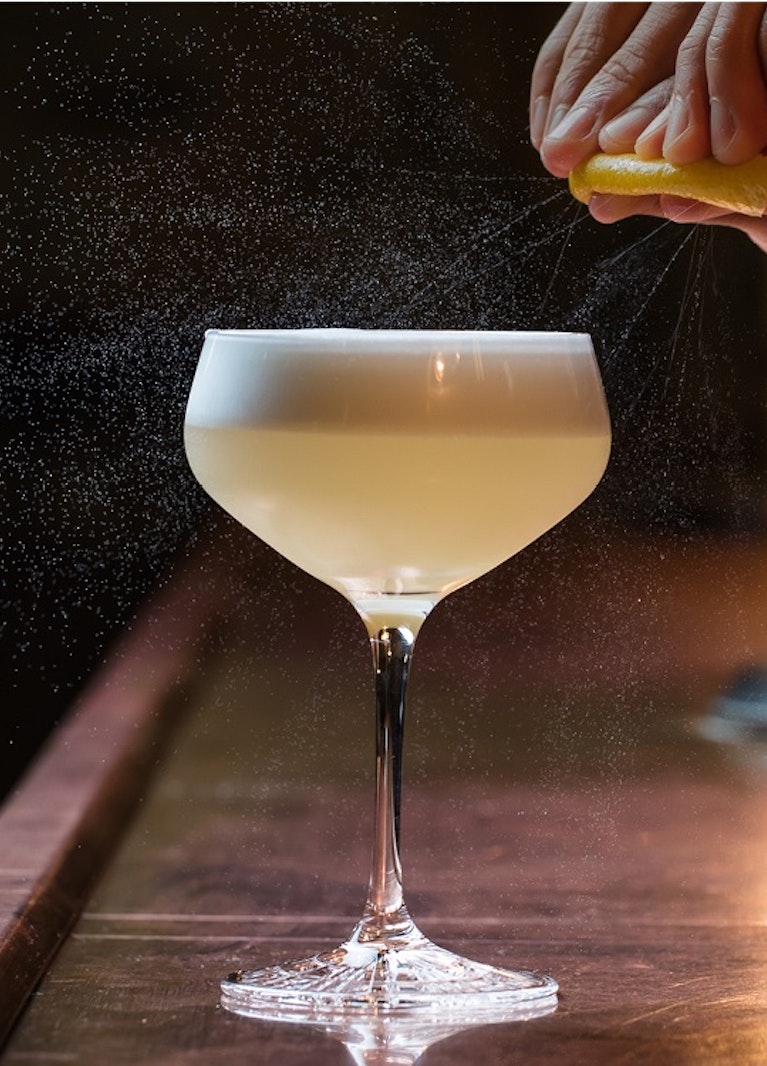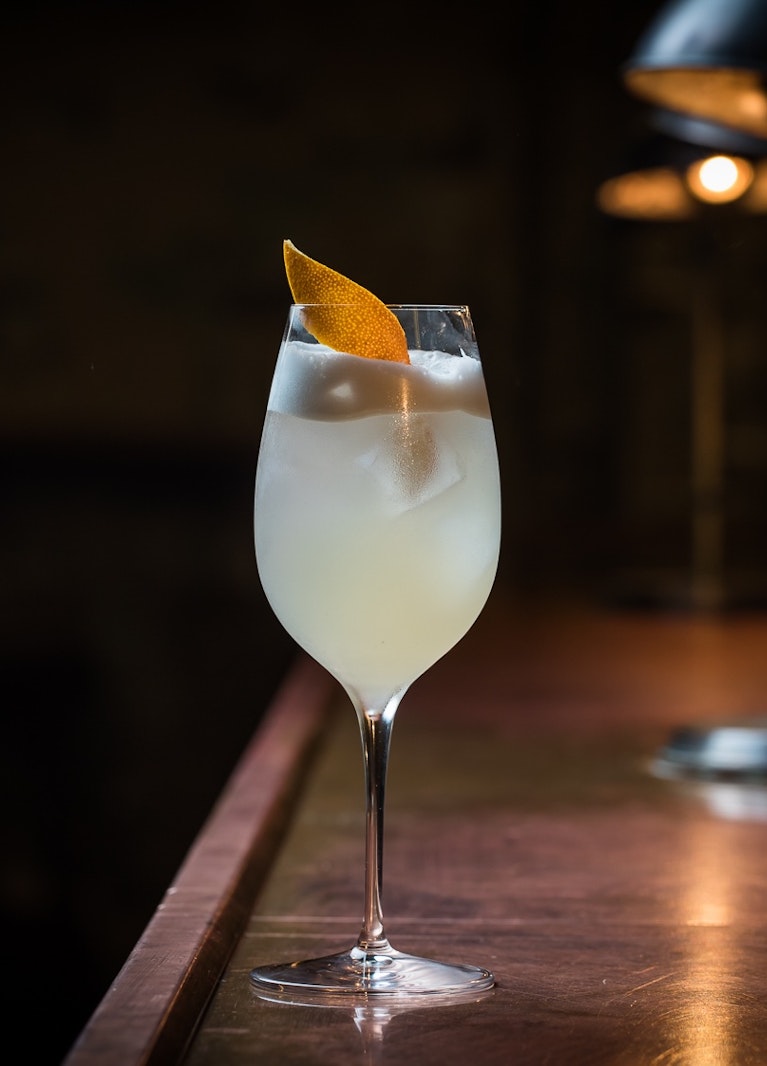Garnish Guide: Doing the Twist

I can tell who made my drink at the Archie Rose Bar by the nuance in the twist. Many bars will have a ‘house rule’ as to what their twist should look like. We certainly have guidelines at Archie Rose – a large thick orange twist for an Old Fashioned, an elegant long lemon zest for a Martini. But the design, the refinement, is left to the individual bartender as their own calling card. If my Martini has jaunty little triangles at either end, I know it’s the work of Archie Rose bartender Julius Beekmeijer (according to him he’s also known as Coolius - but so far that’s only taken off with me – let’s see if this boost can help him with his self-inflicted nickname). If there’s an elegant, refined rhombus vibe going on, I know I was lucky enough to be served by Archie Rose’s Venue Manager, Mr Jonathan Liu, whose mastery of the twist can often be spotted in our imagery. Sometimes to buck tradition I like to give some rectangular action to the limits of my garnish game.
The reason why we twist is a question that is not often asked. But when it’s asked across my bar I usually see the customer grimacing, frantically nodding, yet backing away. I have no idea why? There is so much to talk about!

Citrus!
Citrus is a varied genus in the fruit world. Its tribe boasts massively differing fruits such as the lemon, the clementine, the finger lime. And many of these do remarkable things. Hidden in the skin is citrus oil – a totally different taste to the commonly used flesh. Inside the zest lies complexity, bitterness and intensity. I’m not referring to the pectin-packed pith, but the oil-laden skin. A while ago, I pitched an argument about the king of fruits – for me it’s the white peach. Since that was published only one person has got my shackles up by pitching a serious competitor – and that was the lemon. What a grand dame of the fruit world. I’m sure we can all happily accept grand dames as statelier than kings.
At this time of year, autumn, the great abundance of quality citrus is almost upon us. If you sit very quietly you can almost smell them trundling towards you. If someone were at the front of that stampede, skipping ahead, diligently cutting twists and expressing oils you’d definitely smell them. Look out for plump, cheeky lemons at a grocer near you any minute now, and, you know, when life gives you lemons…blah blah blah… something about making a Gin & Tonic. Whatever, G&Ts are for the amateur home barkeep; but if you’ve gotten this far into an article about citrus we both know that isn’t you. You’re going to do something altogether more challenging with the cocktail kit you’ve bought from here.
Here’s how to twist. There are two schools.
1. Using a paring knife, carefully slide it between the skin and pith and move in a diagonal motion around the fruit from the top of the fruit down to the bottom – maximising the length and number of twists you’ll get from one fruit. Flip this little number and carefully (watch those pointers) separate any excess pith from the skin. Lastly trim the edges (although there is a perfectly valid school of thought that says leave them au naturel – enjoy the rugged character of the fruit – it’s up to you – I’m personally a fan of attempting to wrestle nature into some semblance of sophistication).
2. Using a peeler, achieve the same result as above, then contemplate the trim decision. I’m not going to call you a cheater. I might respect you a little less. But what do you care? You’re sitting at home with a cocktail. Life is good.
Now that you have your twist, what are you going to do with it? You're going to enhance your favourite drink is what you'll do. Is it a Martini (well done you, you erudite thing), is it a Gin Sour (go you classicist), a Hanky Panky (marry me now)?

Here’s the action. Using both hands, grasp the twist between your index and middle fingers and thumbs, point the surface side (not the pith side) towards the surface and squeeze. You’ll see a fine mist of oil spray out across the drink. This is where the massive, oily citrus burst that anoints a Martini comes from. Then turn the strip of peel into a spiral, you’ll see that given a firm enough squeeze it will hold its shape. Perhaps it will relax in the alcohol, unwind a touch. That’s fine, you’re about to do the same after all.
Whatever you choose, enjoy it. Refine your twist, get your own signature style down pat. Throw a party and serve some Archie Rose Distiller’s Strength Martinis. You can invite me to the party via harriet@archierose.com.au
Citrus to try:
Lemon and orange are classics, and are always readily available (an oft rule of thumb is that orange is going to do wonders for darker spirits and lemon is a natural life partner of the unaged spirit. But of course, like all rules, it was meant to be broken).
Grapefruit is an excellent choice – try both white and ruby varieties - but go easy - she’s a bitter mistress.
Not all fruit is going to work, some pack punch but don’t look the best (we remember with a tear the mandarin twist on the Archie Rose x Horisumi Summer Negroni, you tasty but ugly little bugger). Deciding which citrus to choose is not a dangerous game. It’s a rewarding game. Try. There are worse answers to even worserer questions. Sometimes it doesn’t quite fit. Lime can misuse its petite frame to produce an unsatisfactory twist, grapefruit can be overpowering (less is more with this enfant terrible of the citrus world). But whatever you opt for, at least you have a cocktail in your hand at the end of the experiment – was the investigation really fruitless?